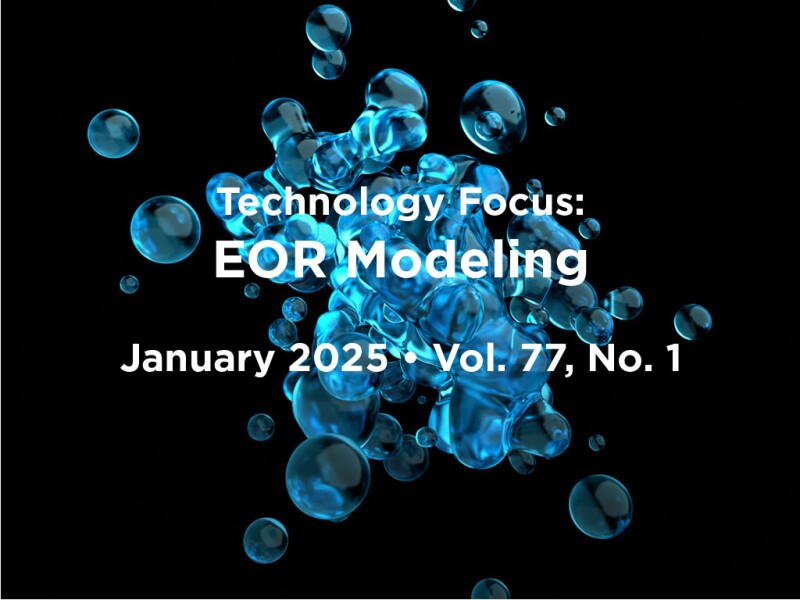Most major global oil and gas companies have committed themselves to decarbonization strategies that reduce the carbon footprint and work toward the goals of climate-change mitigation. These commitments include the use of renewable energy sources, improvements in energy efficiency, and development of technologies that can capture and store carbon emissions. Even with such commitments, energy demand continues to rise globally, driven by population growth, industrialization, and economic progress. These are significant because they have a high energy density and an existing infrastructure.
Enhanced oil recovery (EOR) techniques, particularly those involving CO2 injection (CO2‑EOR), can bridge the gap between current energy needs and future renewable energy adoption. CO2-EOR maximizes oil recovery and provides an attractive and commercially established technique to store CO2 underground.
EOR modeling is crucial because complex simulation is required to predict the behavior of CO2 and its interaction with the oil and reservoir rock. EOR modeling can be enhanced by recent and rapid developments in data-driven approaches, machine learning, and artificial intelligence to improve speed, robustness, and accuracy in predicting CO2-EOR processes.
Such enhancement in predictive accuracy may lead to more-efficient, cost-effective, and sustainable EOR processes, ensuring that the oil industry is capable of meeting growing global energy demand with reduced environmental impact.
This Month’s Technical Papers
Machine Learning Enables Data-Driven Predictions of CO2 EOR Numerical Studies
Physics-Informed ML Improves Forecasting, Connectivity Identification for CO2 EOR
AI Approach Advances Predictive Precision in CO2 Minimum Miscibility Pressure
Recommended Additional Reading
OTC 35456 Leveraging Machine Learning To Optimize CO2-WAG Flooding for Enhanced Oil Recovery and Carbon Storage by Peng Qi, SLB, et al.
SPE 218284 Co-Optimization of CO2-EOR Strategies Considering the Spatiotemporal Sequence Prediction of CO2 Flooding and Sequestration by Xinyu Zhuang, China University of Petroleum, et al.
SPE 218206 Evaluation of Future CO2 Injection in Denver City Field for Enhanced Oil Recovery and CO2 Storage by Muhammad Haseeb Mukhtar, University of Houston, et al.

Luky Hendraningrat, SPE, is a senior scientist in reservoir technology at Petronas. He holds a doctoral degree in enhanced oil recovery (nanoparticles) from the Norwegian University of Science and Technology. Hendraningrat has more than 20 years of oil and gas experience. His research interests are improved/enhanced oil recovery, pressure/volume/temperature analysis, and reservoir modeling. Hendraningrat has published more than 60 technical papers. He has volunteered on technical program committees for multiple SPE events and is a 2024 SPE Regional Service Award recipient.

